About the Street
Senzoku Shopping Street is filled with the atmosphere of old Tokyo downtown history and traditional cultures.
There are many fun events throughout the year.
Please enjoy cozy and livable surrounding spots, where newness and convenience are in harmony with old-fashioned attractions.




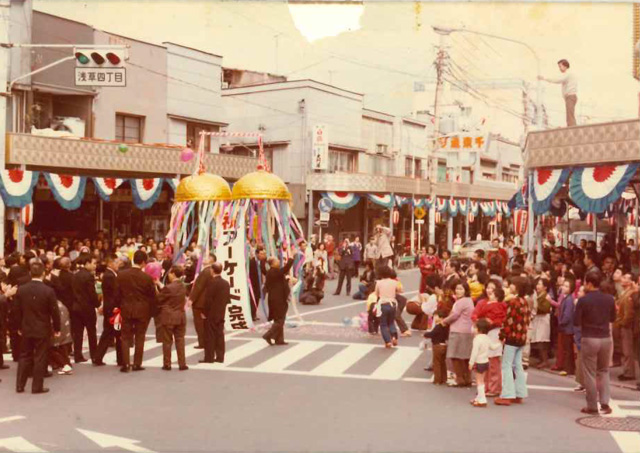

Interaction Spots
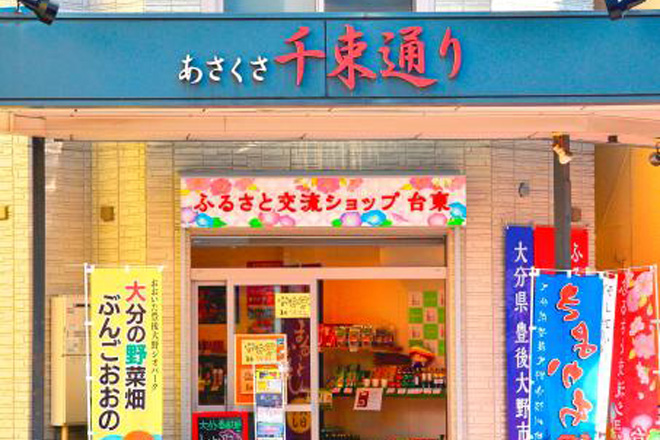
Furusato Interaction Shop Taito
It is a space where municipalities from sister cities and friendly cities from all over the country promote the charm of their respective cities through the sale of local specialties, introduction of traditional arts and culture, distribution of tourism pamphlets, and promotion of relocation.
4-36-5 Asakusa, Taito-ku, Tokyo 03-3875-8827
Oku-Asakusa Resting Place ‘Oku-Asa-chan’
It is a large rest area with benches that is convenient for taking a break during shopping or sightseeing. During events, it also serves as a venue for performances and merchandise sales.
3-39-7 Asakusa, Taito-ku, TokyoHistorical place
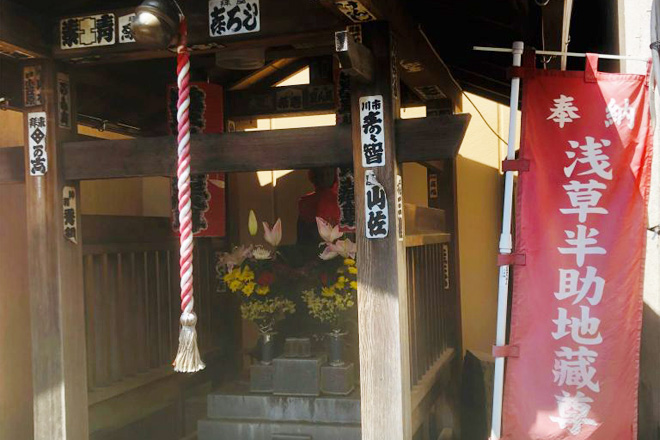
Half-Assist Jizo Statue
It is said that after the death of the chief, Half-Assist, who tirelessly cared for the sick prisoners forcibly transferred from Denma-cho, the prisoners in gratitude carved the Jizo statue.
The location is at 4-22-2 Asakusa, Taito-ku, corner of a copper and silverware shop.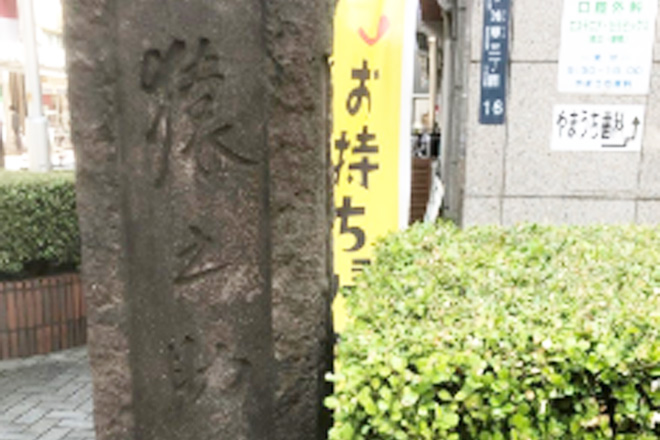
Saruno’s Assistant Yokocho Monument
This area was called Saruno’s Assistant Yokocho because it was where the second Saruno’s Assistant, Saruno (real name Kiyomoto Masaya) lived. From here to the Elephant Swamp, this area was a bustling center for Kabuki performances.
The location is at 3-16 Asakusa, Taito-ku.“The Thousand Bundles” and “Binzasara Dance”
In “The Origins of the Asakusa and Shitaya Neighborhood Names,” it is stated that “bundles refer to ten bundles of rice.” The Asakusa and Shitaya neighborhoods were known for their rice paddies.
The religious ceremony “Binzasara Dance” is a traditional dance performed to pray for a bountiful harvest, and it is said that the people involved in the dance were from the old houses of the Shitaya neighborhood. Binzasara is said to have originated in the Thousand Bundles neighborhood, and even now, the Saito family, who are said to have inherited the role of the lion dancer, own an old document from 1847, which states that the land of five chō (about 495 square meters) was given to the lion dancer.
Is this the area where the comedian Beat Takeshi lived?
The “Second Matsukura Villa” where he lived during the early days of “France-za” is located a little bit inside from the Iemon-dori street, behind the Fuji Bank on the Sensoji-dori street.
It is said that he also frequented the sento (public bathhouse) “Akebono-yu” located in the Asakusa 4th district which has beautiful wooden architecture and wisteria trellis.
The main character of the manga “Kochikame,” Ryotsu, is from the Chuo-ku area?
The main character of the manga “Kochikame,” Ryotsu, is from the Chuo-ku area? The series “Kochira Katsushika-ku Kameari Koen-mae Hashutsujo,” which ran in Weekly Shonen Jump, features the rowdy main character Ryotsu, who is the eldest son of a family that runs a vegetable farm in Chuo-ku’s 8-707. However, Chuo-ku only goes up to the 4th block.
The 8th block does not exist… but the Asakusa Shrine, which appears in various episodes of “Asakusa Story” and was also a playground for Ryotsu.
Shishimai
“Shishimai” is said to bring good health and ward off bad luck if you watch it in the first week of January. It is said that by watching the lion dance, you will be bitten by the lion's head, which will bring good health and ward off bad luck.
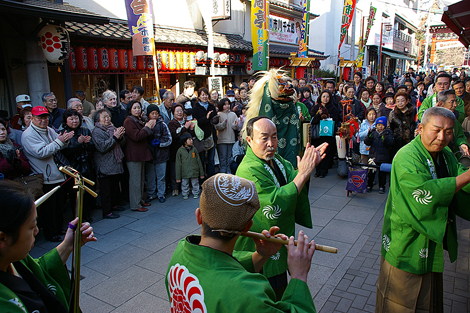
Spring Grand Thanksgiving
If you make a purchase of 500 yen or more at stores participating in the Shopping Street campaign, you will receive one lottery ticket. With two tickets, you can participate in the lottery once to win Shopping Street gift certificates or other luxurious prizes!
Asakusa Kannon-ura Single Cherry Blossom Festival
The festival is held, where cherry blossoms and peonies along the Komatsubashi Street are in full bloom. The "Edo Yoshiwara Oiran Dochu" (Edo Yoshiwara Walk) is particularly vibrant, with stage shows and simulated shops also being held.
Sanja Festival
The festival is held at the Asakusa Shrine, where the mikoshi (portable shrines) from the 44 neighborhoods of the shrine are carried around the area. The evening mikoshi parade held on Senzoku Street is particularly beautiful and fantastical, with a lot of excitement.
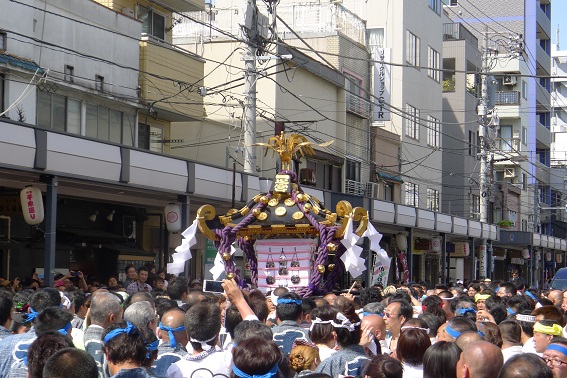
Summer rooster (Otori-sama) and Ajisai Matsuri (hydrangea festival)
We create objects decorated with colorful hydrangeas to entertain people walking down the street. In addition to the lottery, we prepare various events including stage entertainment.
Outdoor Evening Party
Enjoy lots of fun events including a music show and street fairs. With the cooperation of the Asakusa Samba Carnival Committee, a public rehearsal (Ensaio Técnico) just like the actual samba performance is also being held!
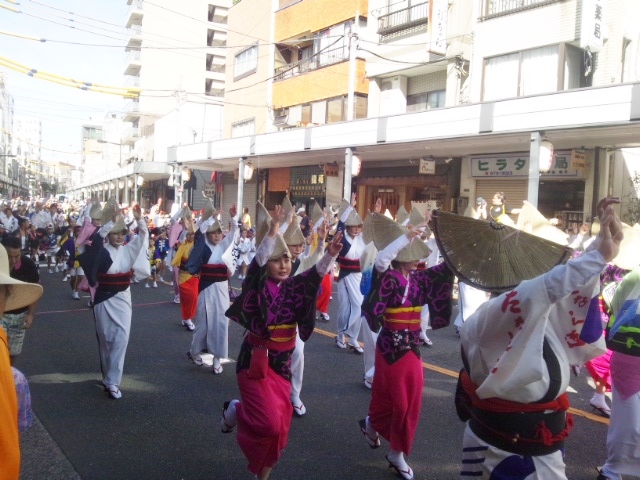
Autumn Great Appreciation Festival
During the early November, there are events such as lottery with great prizes, festival corners, Halloween parade, and stamp rally that are held with new ideas every year.



